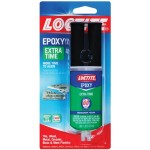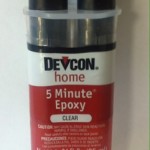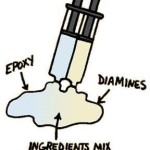I was cleaning out my garage last Saturday (doesn’t everyone need to get rid of some of the stuff we collect?) and I came across some of my old IBM stuff in a box. To my surprise, I discovered a THINK pad, and not my laptop (I also have a Lenovo ThinkPad laptop). I got this when I joined IBM right out of grad school in 1982. It is an original leather bound THINK pad. Many ... [Click to Continue...]
Two New eBooks Added to the eBook Store
Thank you to all my loyal blog readers. We had two large series over the past year; one on Rheology of Thermosets and the second on Dielectric Cure Monitoring for Thermostes. I recently compiled them into eBooks and they are available in the eBook Store. Click on the image below for more information and to purchase your copy of the ... [Click to Continue...]
MTDSC of Thermosets Part 6: Sixty-Minute Epoxy
Guest Post by Dr. Lawrence Judovits, Arkema, and Dr. R. Bruce Prime In the previous posts we presented the characterization of two 5-minute epoxies. In this last post in this series we contrast these fast reacting systems with a slower reacting 60-minute epoxy, and because it is slower reacting with a higher Tg we are able to observe vitrification in addition to cure by ... [Click to Continue...]
MTDSC of Thermosets Part 5: Five-Minute Epoxy, Continued
Guest Post by Dr. Lawrence Judovits, Arkema, and Dr. R. Bruce Prime In the previous post we listed the characteristics of 5-minute epoxies as described on their packaging and we showed MTDSC data for Devcon® and Gorilla® 5-minute epoxies illustrating the complexity of their cures. In this post we describe the further characterization of these epoxies from Tg – time curves ... [Click to Continue...]
MTDSC of Thermosets Part 4: Five-Minute Epoxy
Guest Post by Dr. Lawrence Judovits, Arkema, and Dr. R. Bruce Prime In the previous posts in this series we have described the principles of modulated temperature DSC and its application to the cure of thermosets. In this post we describe the characterization of a common two-part epoxy, Devcon® 5 Minute Epoxy, that is readily available at hardware ... [Click to Continue...]




